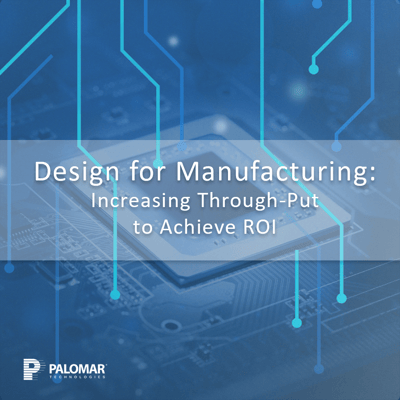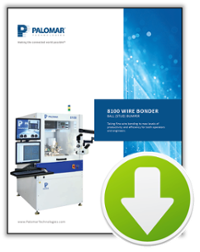When designing semiconductor packaging, it is often easy to get caught up focusing on the function and performance of a design and not pay enough attention to its assembly process. This is often the case because a packaging engineer may become preoccupied with what the form factor of the package has to be or how to best squeeze out the most performance for the lowest power, using the least expensive components and so on. While these various concerns are certainly vital to the future device, manufacturability is an element which is commonly forgotten about and not given enough attention in the design phase of a product. Ultimately, the manufacturability of the design will have a tremendous impact on the through-put and ROI of the package.

Generally, a packaging design will neglect various features or considerations, such as equipment limitations which make assembly difficult or even possible. Indeed, it is a common misconception that going from an initial design to a first article build is an easy, one-step process. This process usually involves learning what can impact or hinder the manufacturing of a device and adding in the elements that may have been missing from the initial design phase.
When discussing manufacturability in the context of the semiconductor packaging industry, several common pitfalls seen in a design include: lack of proper tolerances for manufacturing, poor bonding material selection, lack of robust and repeatable fiducials to make alignment easier, and lack of traceability and testing features. Each of these missteps in design may not make the product impossible to build, but will certainly affect overall assembly quality and yield if left unaddressed. In fact, not properly addressing these issues, may make it impossible to achieve a profitable ROI on the package.
The importance of proper tolerancing of parts cannot be understated as it can lead to an inability to achieve various package specifications. For example, without proper tolerances for substrate flatness, it can be nearly impossible to attain less than 5% voiding in eutectic bonding. This can occur from the solder being unable to properly fill out a gap formed between the bowing of the package and the die. This can lead to poor heat transfer and a product which does not meet specifications.
Selecting a proper material for bonding is another important factor for maintaining manufacturability of a device. Again, focusing on the function and performance characteristics too much can lead to neglecting effects on the bonding capability. An example of this would be choosing a particular silver filled epoxy for its quick curing cycle and electrical conductivity, while not considering its particle size and their effects on high accuracy placement of fine components. With larger particle sizes and smaller bond line thicknesses, placement accuracy can become a real concern; especially when dealing with components that are less than 0.5 mm. Another case of poor material selection that could affect manufacturability would be choosing a component with ideal bond pad metallization for performance but not considering the wire type being used for interconnection which would make the bonding much more difficult.
One of the most commonly forgotten elements to include in packaging designs is a set of robust and repeatable fiducials for alignment. Distinct and deliberate features are essential to high accuracy placement during the die bonding process. Without a reference on the package that can be reliably located through pattern recognition, it is unfeasible to repeatedly achieve micron level alignment. No matter how precise a machine may be, it will only ever be as good as the instructions it is given; as such, yield can be greatly affected by the lack of solid fiducials on both the package and components.
The final frequently neglected design consideration is the lack of inclusion of proper testing and traceability features. While these generally take different forms within a device, they do contribute to the same effect on manufacturability: granting production the ability to adapt to, as well as, to combat issues as they arise. Although there is not a direct affect on product performance or quality, the incorporation of identifiers on packages and components will lead to agile root cause analysis of device failures, while testing features will provide methods to narrow down failures to specific areas. Both of these will minimize material scrap and rework.
While not an exhaustive dive into key considerations for the manufacturability in the designs of semiconductor devices, the above is a solid list of some of the most common issues that have been encountered throughout Palomar’s 45+ years of engagement with the semiconductor industry.
To read more about these potential issues and learn additional lessons from Palomar’s collective experience in semiconductor packaging, click the link below to see the 27-page article on “The Journey to Full Scale Semiconductor Packaging”, a comprehensive walk through of the various stages of package development in the semiconductor industry.
| The Journey to Full-Scale Semiconductor Packaging Mnaufacturing Paper | 3880-II Die Bonder Brochure | 8100 Wire Bonder Brochure |
 |
 |
 |
----
Kyle Schaefer
Palomar Product Marketing Manager
Palomar Technologies, Inc.